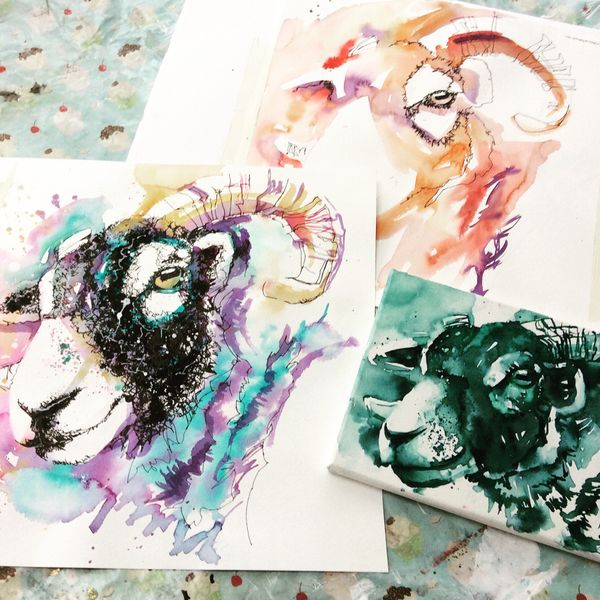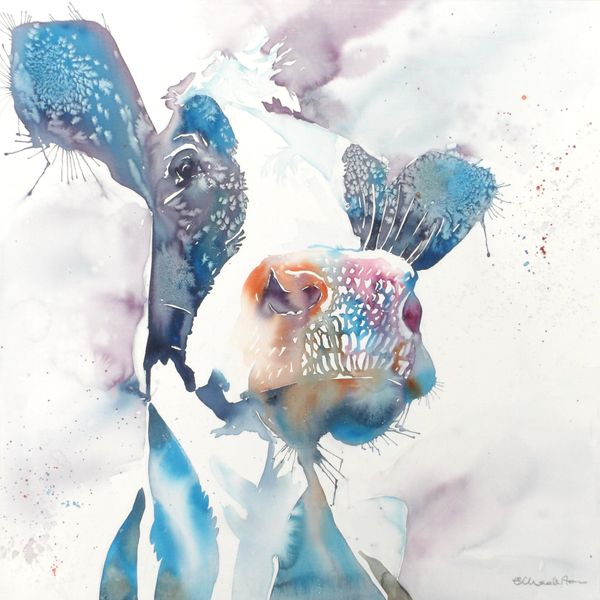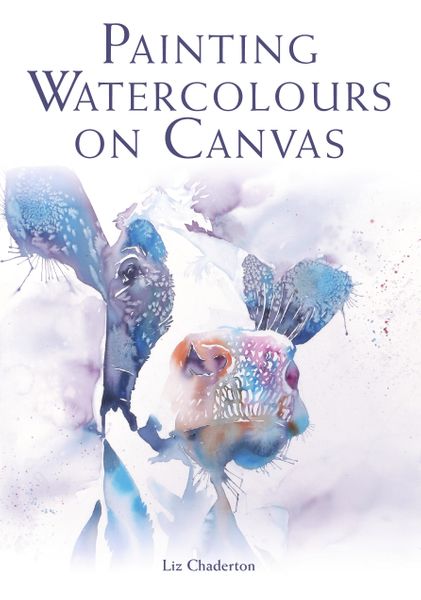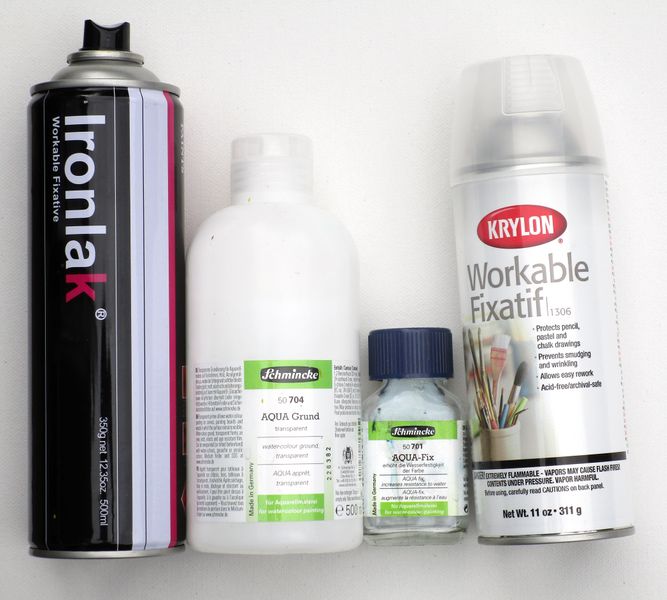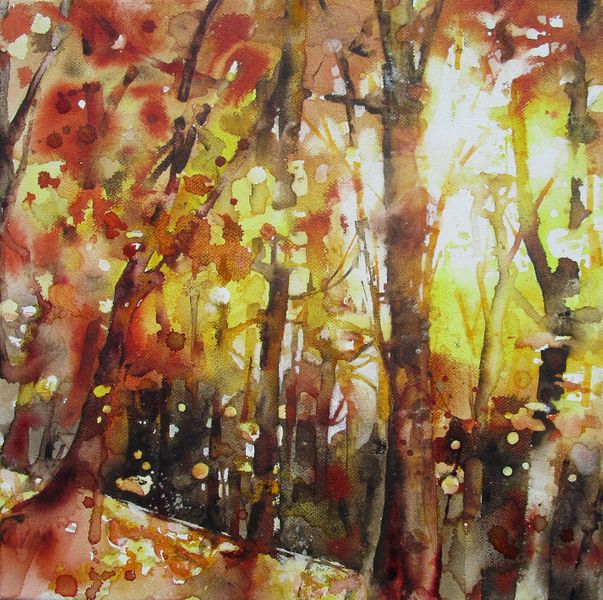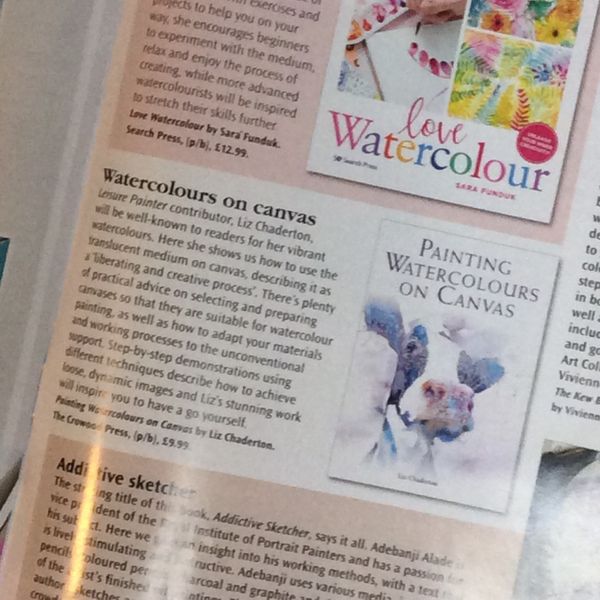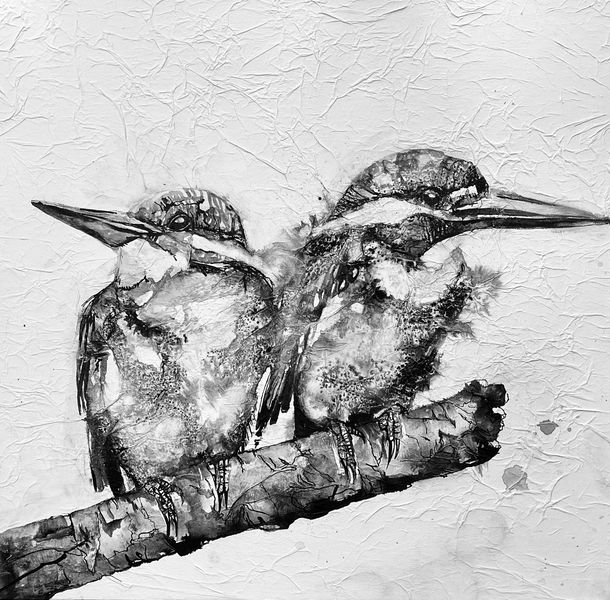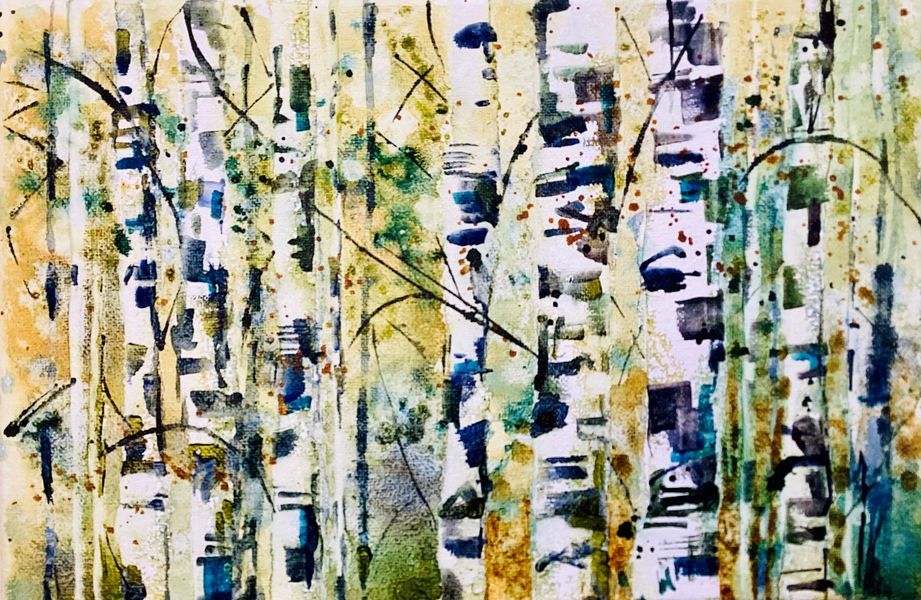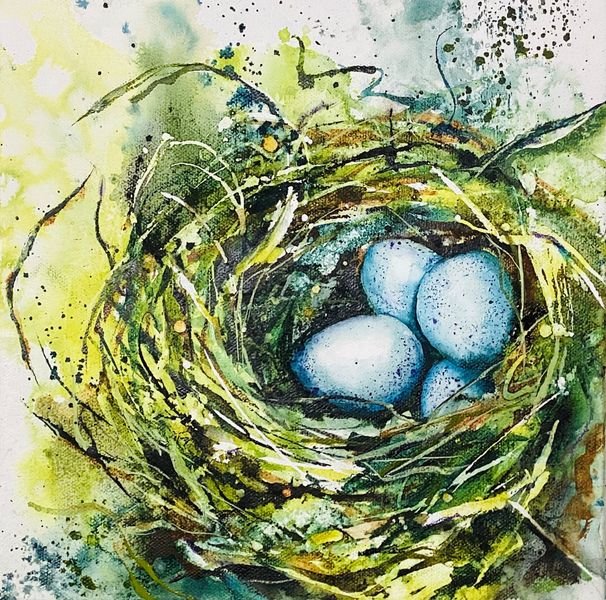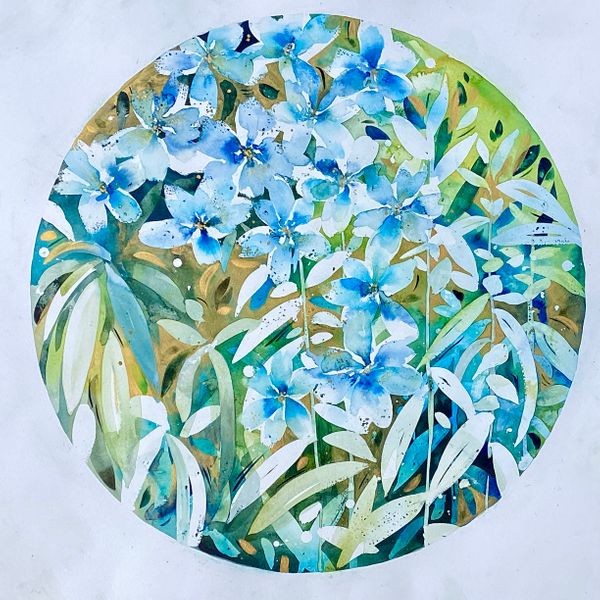Description
Painting watercolours on canvas is an exciting process if you like to explore new techniques for this gorgeous medium. You are no longer restricted by size or the need to frame your work This brand new on demand course takes you through preparation, painting techniques and finishing your work. This is not a beginner's watercolour course, but is suitable for those who have at least a little to a lot of experience in painting watercolour on paper, who now want to try a new surface and break away from glass and framing.
What's included in the price?
Introduction - is this the right course for you? This course is intended to be as close as possible to sitting next to me in my studio learning. We will cover everything from the materials, to techniques, special challenges and finishing off. 1. Materials and preparation - we will cover the advantages of preparing your own watercolour canvases, what watercolour ground is, the process and how to make your own ground. 2. Warming up - just to make sure we are using the same terms and to start getting used to the watercolour ground, we will do a basics warm up. I also cover gridding up, if you are concerned about transferring your image to canvas or increasing the size. 3. Tone - layering on canvas is tricky, so getting the tone right first time is crucial. We will do a simple exercise to work on a tonal strip and then do a monochrome piece on canvas. 4. Creating the illusion of texture - there are lots of tricks which create beautiful effects on canvas, we go through some of them and then put them into practice in an abstracted painting of birch trees. 5. Putting it all into practice in a colourful painting of a cow. How do we paint directly to get tones right first time? How do we layer and add detail? 6. Layering is a challenge - by now you realise that watercolour lifts incredibly easily on canvas, which is both a strength and weakness. We use Aquafix to stabilise our paints, so that we can layer to our heart's content in lively painting of a nest with eggs. This also gives us the chance to use masking fluid on canvas. 7. Creating a textured canvas - how might you start to take your watercolours further? By working on a textured surface. I show you a few ways of achieving an interesting surface, though no doubt you will think of plenty more! 8. Ink and watercolour - another option for overcoming the lifting/layering challenge is to use waterproof Indian ink as an under painting. We explore how it behaves and then use the textured canvas from lesson 8 to create a beautiful study of two kingfishers. 9. Sealing and finishing - how can we protect, frame and hang our work to show it off?
What you will need
It is important you start to develop your own artistic voice, so if you do not like the colours, format or subject matter I use, please feel free to substitute what you have available or what you prefer. Just understand the point of the lesson and make sure you enjoy the same learning. A hairdryer may be useful. Please watch the section on materials before purchasing ground or canvas. 1. Warming up - off cut of mount board (often available free from framers) or other heavy weight card stock. You can use a canvas, but this is more expensive and harder to store. Watercolour ground of your choice, applicator. Watercolours (any colour,pans or tubes), water, spray bottle, paper towel, brushes (round size 16 and 8, rigger size 2 are used throughout). 2. Tone - for the tonal strip - off cut of prepared mount board. For the monochrome, small prepared canvas (20x30cm). Plus colour of your choice with a wide tonal range. Water, spray bottle, paper towel, brushes. 3. Creating the illusion of texture - off cut of prepared mount board. Water, spray bottle, paper towel, brushes, plus items such as salt, plastic wrap, bubble wrap etc. For the birch trees, small prepared canvas (20x30cm). Plus your choice of watercolours - see film for suggestions. 4. Putting it all into practice (cow). Prepared flat edge canvas (30x30cm). Your choice of watercolours - see film for suggestions. Water, spray bottle, paper towel, brushes. 5. Layering is a challenge - Prepared deep edge canvas (25x25cm). Schmincke Aquafix or Lukas Shellac Soap, masking fluid. Your choice of watercolours - see film for suggestions. Water, spray bottle, paper towel, brushes. 6. Creating a textured canvas - Canvas - 50x50cm narrow edge canvas, tissue paper - acid free, white, sufficient to cover the canvas, PVA glue - acid free, watercolour ground, applicator and container for glue 7. Ink and watercolour - prepared canvas (I use the one from 'Creating a textured canvas'), waterproof Indian ink, fineliner pigment ink pens (eg Microns) in a couple of sizes eg 0.7, 0.4mm. Your choice of watercolours - see film for suggestions. Water, spray bottle, paper towel, brushes. 8. Sealing and finishing - please watch the film to see different options for sealing before making any purchases.
Duration
Maker

Liz lives and works in a small village in Berkshire. She has been showing her work through exhibitions and galleries since 2009. A selection of her paintings are published by Artko, Artwall and Wraptious. Her first book, 'Painting watercolours on canvas' was published by the Crowood Press in June 2019 and her fifth is due to be published in late 2023. She writes for The Leisure Painter and other art magazines and teaches extensively on YouTube. She aims to help you see the animals and flora we so often overlook and by so doing to nurture a more caring attitude to the environment.
Suitable for
- Adults
- Seniors
- Teenagers
- Wheelchair users
- Hearing impaired
- Limited mobility
- Intermediate level

FAQs
Regretfully under 18s cannot be accommodated. I do not hold a DRB and therefore a parent or guardian would need to be present at all times by law. Many of my students are teachers or parents of teenagers and come to escape! The way I teach is very student led and I have found this does not suit those in education as it is very different from the classroom style. In my experience it changes the dynamic of the day and therefore I only teach adults on my workshops.
Unfortunately while Knowl Hill is level access, it is not wheel chair accessible. There are uneven paths and steps on the property due to its age. There is a single step between the studio and the toilet. The toilet is not adapted. If you have any access issues or need extra support, please discuss before booking and Liz will do whatever she can to accommodate you.
These will be sent out with course information, once you have confirmed. But if you want to look at the venue in Knowl Hill, please go to their website www.micklemsfarm.com. There is lots of parking. If the weather is nice we should be able to paint outside too. If numbers fall below five, I may move the course to my conservatory, which can accommodate four painters easily. I will give you as much notice as possible.
The course starts at 10.00, but please try and arrive 15-20 minutes before hand. We should be finished by 4.00/4.30. Timings are flexible to accommodate the speed at which people work.
Tea and coffee are available all day. If you need a special milk, please bring your own. Please bring your own lunch.
All materials are provided so that everyone has the right things to work with and get the most out of the course. While you are welcome to bring your favourite supplies if you want, no reduction can be offered.
If people are beginning, then they don’t want to have to buy everything before they know if they are going to enjoy it. If more experienced, all art materials are not created equal. Should someone bring lower quality materials, they may struggle to achieve the results they are after. If someone forgets things, there are no art shops nearby to buy stock. It is safer and less frustrating to have everything supplied.
Your enthusiasm! All art materials will be supplied unless otherwise stated. Wear old clothes and bring an apron if you like. You might be asked to bring an image you want to work from, depending on your course. If you have favourite brushes or colours, of course feel free to bring them.
Everything – paper, brushes, paint, water…. Tea, coffee, biscuits. Bring yourself and a willingness to have a go.
It’s normal to be nervous, but as everyone is in the same boat, the nerves will disappear in a flash. If you come on your own, you immediately have something in common with everyone else so it is easy to relax. Your tutor will do everything possible to make sure you have a great time and learn a lot. You might be exhausted at the end of the day, but no longer nervous!
The groups are kept small so that you get lots of attention. All materials are supplied, so that you can work with artist quality supplies. Your tutor is a professional working artist, with experience in teaching everyone from beginners through to professionals. The workshops are held in a beautiful location, so there is peace and quiet to concentrate on yourself. They are relaxed and fun, tailored to your needs and experience.
This course is taught online
